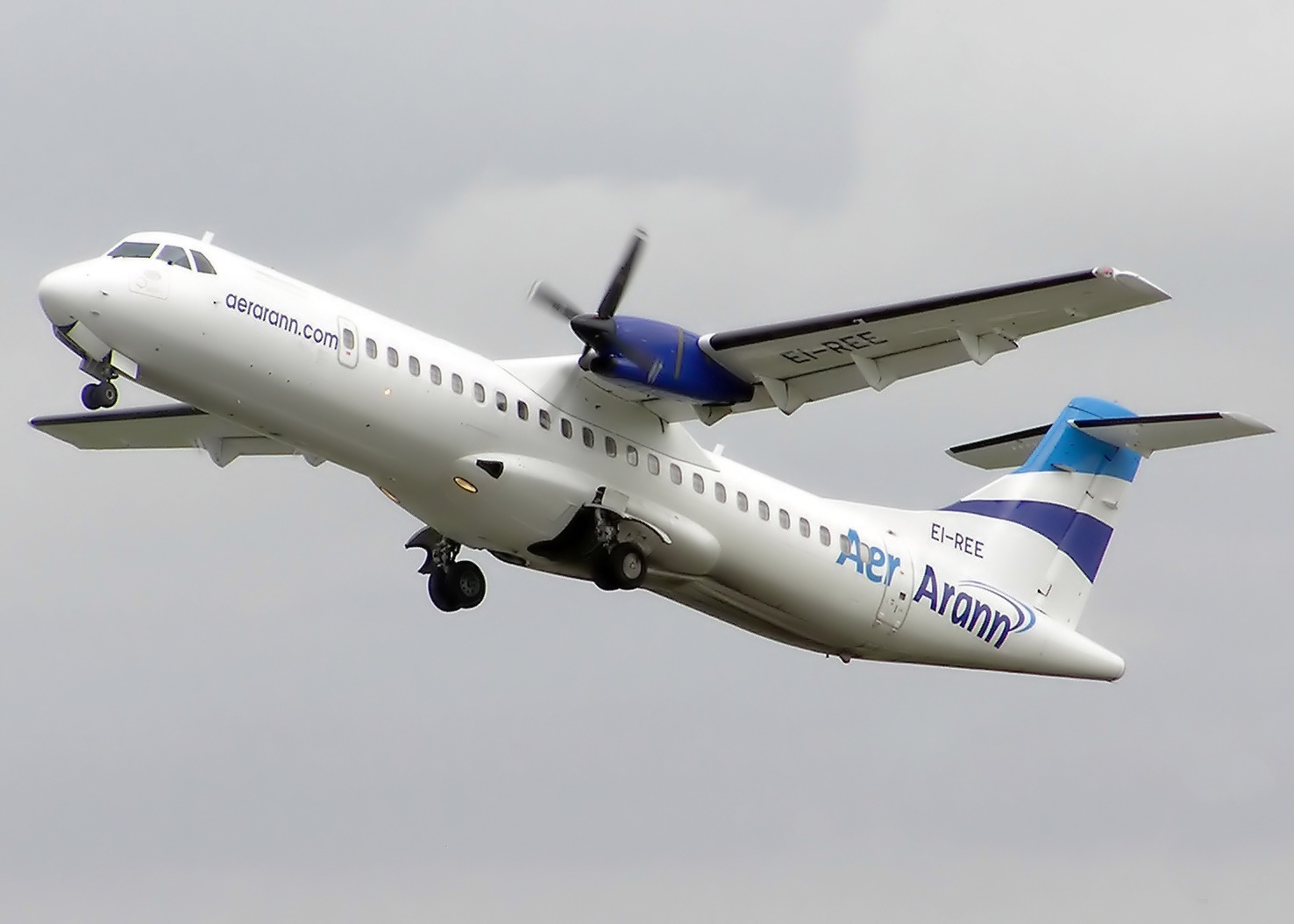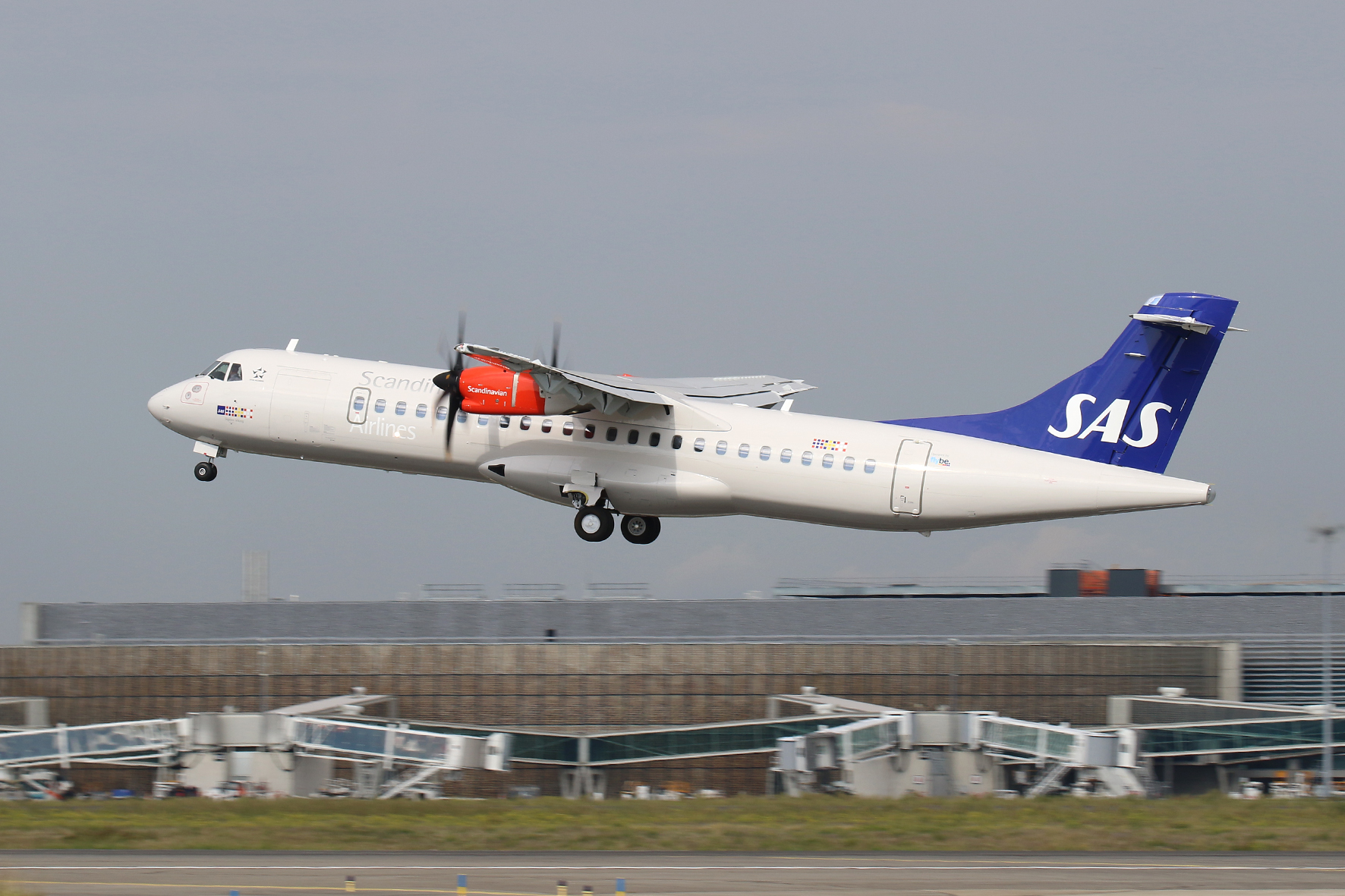ATR 72 Aircraft Overview: Atr 72 Plane

The ATR 72 is a popular regional turboprop airliner known for its versatility and efficiency. This aircraft has been a mainstay in the aviation industry for over three decades, serving airlines worldwide with its reliable performance and cost-effectiveness.
History and Development
The ATR 72’s journey began in the 1980s when the French and Italian aircraft manufacturers, Aérospatiale and Aeritalia, respectively, joined forces to develop a new generation of turboprop aircraft. The ATR 42, a smaller version, was introduced in 1989, followed by the ATR 72 in 1990. The ATR 72’s development focused on incorporating advanced technologies, including composite materials and powerful turboprop engines, to deliver superior performance and fuel efficiency.
Design Features
The ATR 72’s design embodies a combination of practical considerations and innovative engineering. Here’s a breakdown of its key features:
* Twin-Turboprop Engines: The ATR 72 is powered by two Pratt & Whitney Canada PW127 engines, renowned for their reliability and fuel efficiency. These engines generate significant thrust, enabling the aircraft to operate from short and unpaved runways.
* High-Wing Configuration: The high-wing design offers several advantages, including improved visibility for the pilots, increased ground clearance for operations in challenging terrains, and enhanced passenger comfort.
* Spacious Cabin: The ATR 72 boasts a spacious cabin with comfortable seating for up to 78 passengers. The cabin’s design prioritizes passenger comfort and provides ample legroom and overhead storage.
Variants, Atr 72 plane
The ATR 72 has evolved over the years, with several variants catering to different operational needs. Here’s a list of the most prominent ATR 72 variants, highlighting their key differences and specifications:
* ATR 72-200: This was the initial version of the ATR 72, introduced in 1990. It featured a maximum takeoff weight of 21,500 kg and a maximum seating capacity of 72 passengers.
* ATR 72-210: This variant was introduced in 1994, with a slightly increased maximum takeoff weight of 22,000 kg and a maximum seating capacity of 74 passengers.
* ATR 72-500: This significant upgrade, introduced in 2007, featured a redesigned wing and more powerful engines. It offered a maximum takeoff weight of 23,000 kg and a maximum seating capacity of 78 passengers.
* ATR 72-600: This current generation model, introduced in 2010, boasts enhanced fuel efficiency, improved performance, and advanced avionics. It features a maximum takeoff weight of 23,500 kg and a maximum seating capacity of 78 passengers.
The ATR 72-600 series is known for its advanced avionics suite, which includes a fully integrated glass cockpit, a Head-Up Display (HUD), and a sophisticated autopilot system.
ATR 72 Operations and Capabilities

The ATR 72 is a versatile aircraft designed for short-haul regional operations, known for its efficiency and ability to operate in challenging conditions. Its capabilities and performance characteristics make it suitable for a wide range of applications.
Flight Characteristics and Performance
The ATR 72 boasts impressive performance metrics that contribute to its versatility and efficiency.
- Cruising Speed: The ATR 72 typically cruises at a speed of around 400 kilometers per hour (250 miles per hour), providing a balance between speed and fuel efficiency.
- Range: The aircraft’s range varies depending on factors such as payload and weather conditions, but it generally has a maximum range of approximately 1,500 kilometers (930 miles). This range allows for efficient operation on regional routes.
- Payload Capacity: The ATR 72 can carry up to 78 passengers or a significant cargo load, making it suitable for both passenger and freight operations.
Operating Environment
The ATR 72 is designed to operate in a variety of environments, including:
- Short Runways: Its short takeoff and landing (STOL) capabilities allow it to operate from runways as short as 1,200 meters (3,900 feet), making it ideal for serving smaller airports with limited runway infrastructure.
- Mountainous Terrain: The ATR 72’s powerful engines and robust design enable it to operate in mountainous regions with high altitudes and challenging weather conditions. Its high wing design provides excellent visibility for pilots during approaches and departures in mountainous areas.
- Hot and Humid Conditions: The aircraft’s performance is not significantly affected by high temperatures and humidity, making it suitable for operation in tropical and subtropical climates.
Common Uses
The ATR 72’s versatility has led to its widespread use in various applications, including:
- Regional Air Travel: The ATR 72 is a popular choice for regional airlines, connecting smaller cities and towns to major hubs. Its fuel efficiency and ability to operate from short runways make it a cost-effective solution for regional air travel.
- Cargo Transport: The ATR 72 can be configured for cargo operations, transporting goods and packages on regional routes. Its cargo capacity and ability to operate in challenging environments make it suitable for cargo transport in various regions.
- Special Mission Operations: The ATR 72 is also used for special mission operations, such as aerial surveillance, medical evacuation, and search and rescue. Its versatility and ability to operate in remote locations make it well-suited for these missions.
ATR 72 Safety and Reliability

The ATR 72, a popular regional turboprop aircraft, has earned a reputation for its safety and reliability. While no aircraft is completely immune to accidents, the ATR 72 has consistently demonstrated a strong safety record, making it a preferred choice for airlines and passengers alike.
Safety Record
The ATR 72’s safety record is impressive, with a low accident rate compared to other aircraft types. The aircraft has been involved in a relatively small number of accidents and incidents, with most of them attributed to pilot error or external factors rather than aircraft design flaws.
- The ATR 72 has a good safety record with a relatively low accident rate.
- The majority of accidents involving ATR 72 aircraft have been attributed to pilot error or external factors.
- The aircraft’s design and safety features have been consistently updated to enhance its safety.
Maintenance Requirements and Procedures
The ATR 72’s maintenance requirements are designed to ensure the aircraft’s continued airworthiness and safety. The aircraft’s maintenance procedures are comprehensive and include regular inspections, component replacements, and other maintenance tasks.
- ATR 72 aircraft undergo regular maintenance checks and inspections to ensure their continued airworthiness.
- The aircraft’s maintenance procedures are standardized and comprehensive, covering all aspects of the aircraft.
- These procedures are designed to prevent potential safety issues and ensure the aircraft’s continued reliability.
Technology and Advancements
Technology plays a crucial role in enhancing the ATR 72’s safety and reliability. The aircraft is equipped with advanced avionics systems, including weather radar, ground proximity warning systems, and other safety features that help pilots avoid potential hazards and ensure a safe flight.
- The ATR 72 is equipped with advanced avionics systems that enhance its safety and reliability.
- These systems include weather radar, ground proximity warning systems, and other safety features.
- The aircraft’s design incorporates features that reduce the risk of accidents, such as its robust structure and reliable engines.
Atr 72 plane – The ATR 72 is a versatile aircraft, known for its reliability and ability to navigate challenging terrains. Just as the ATR 72 requires a skilled pilot to navigate its course, the political landscape demands experienced moderators to guide the discussions.
The question of who will moderate the next presidential debate is crucial, as the moderator sets the tone and ensures a fair and insightful exchange. Like a pilot steering the ATR 72, the moderator must be adept at navigating complex issues and facilitating a productive conversation.
The ATR 72, a versatile turboprop aircraft, often takes to the skies carrying passengers to destinations both near and far. But just as this plane navigates the complexities of air travel, so too do politicians navigate the complexities of political discourse.
A prime example of this is the recent fox presidential debate , where candidates grappled with pressing issues and sought to connect with the American people. Much like the ATR 72’s reliable performance, these debates offer a platform for crucial conversations that shape the future of our nation.
